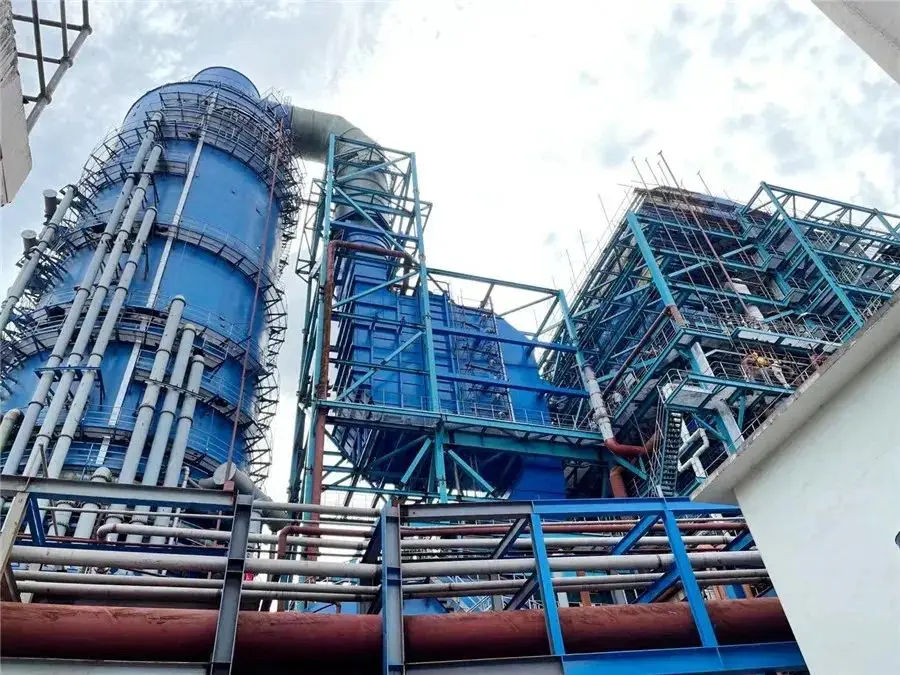
নভে. . 08, 2024 23:27 Back to list
Steam Pressure Management System for Boiler Operations Optimization
Boiler Steam Pressure Control System
A boiler steam pressure control system is a crucial component in modern industrial processes, ensuring both safety and efficiency. Steam boilers play an integral role in a variety of applications, from power generation to heating systems in manufacturing processes. The effective control of steam pressure is vital for the optimal functioning of these systems and directly impacts energy efficiency, equipment lifespan, and operational safety.
Overview of Boiler Systems
At its core, a boiler converts water into steam through the application of heat, typically generated by burning fuels such as natural gas, oil, or biomass. The produced steam is then utilized to drive turbines, heat manufacturing processes, or support heating applications in residential and commercial buildings. The operational efficiency of a boiler system hinges significantly on maintaining the right steam pressure, which is defined as the pressure at which steam is produced and distributed in the system.
Importance of Pressure Control
Maintaining the appropriate steam pressure is essential for several reasons. First and foremost, excess pressure can lead to catastrophic failures, risking both equipment and human safety. Over-pressurization can result in boiler explosions or structural damage to steam distribution systems. Conversely, insufficient steam pressure can lead to inefficiencies, as processes may not receive the necessary energy to operate optimally, leading to increased fuel consumption and higher operational costs.
The steam pressure control system reduces risks and enhances performance through automatic regulation of steam pressure within a specified range. This is accomplished by utilizing various control mechanisms, including sensors, actuators, and control algorithms.
Components of a Pressure Control System
A typical boiler steam pressure control system comprises several key components
1. Pressure Sensors These devices monitor the actual steam pressure within the boiler or steam distribution system. They provide real-time data to the control system, ensuring continuous monitoring of pressure levels.
2. Control System A programmable logic controller (PLC) or a distributed control system (DCS) processes the data received from pressure sensors. Using predefined algorithms, the control system determines whether the steam pressure is within acceptable limits and how to adjust generation parameters to correct any discrepancies.
3. Actuators Depending on signals from the control system, actuators adjust the fuel supply and the operation of valves within the boiler system. For instance, if the pressure is too low, the actuators may open a valve to increase steam production or adjust the fuel feed rate to generate more heat.
boiler steam pressure control system

Control Strategies
Several control strategies can be employed to manage steam pressure effectively
1. Proportional Control This approach adjusts the input (such as fuel or water) based on the current pressure level, providing a direct response to changes in steam pressure.
2. Integral Control This method addresses sustained pressure deviations by integrating the error over time, making adjustments to eliminate discrepancies.
3. Derivative Control It anticipates pressure changes by considering the rate of change, allowing for proactive adjustments to maintain stability.
4. PID Control A combination of proportional, integral, and derivative controls, this strategy is extensively used for pressure management due to its robustness and efficiency in dynamic conditions.
Benefits of Advanced Control Systems
Modern steam pressure control systems frequently incorporate advanced technologies, including artificial intelligence and machine learning algorithms, to improve efficiency and adaptability. These smart systems can optimize boiler operations based on varying load demands, ambient conditions, and fuel availability, ensuring a responsive and efficient management of steam pressure.
Conclusion
In conclusion, a boiler steam pressure control system is an indispensable part of industrial operations, providing safety and efficiency in steam generation. By effectively monitoring and controlling steam pressure, industries can not only safeguard equipment and personnel but also enhance operational efficiency and reduce energy costs. As technology advances, the integration of intelligent control systems will further elevate the capabilities and performance of steam pressure management, paving the way for a more sustainable and efficient industrial future.
-
Commercial Steam Boilers for Sale - AI Optimized Efficiency
NewsAug.02,2025
-
Efficient Biomass Fired Hot Water Boiler | AI Heating Solution
NewsAug.01,2025
-
High-Efficiency Gas Thermal Oil Boilers | HPT Models
NewsJul.31,2025
-
Oil Fired Hot Water Boilers Sale - High Efficiency & Affordable
NewsJul.31,2025
-
High-Efficiency Commercial Oil Fired Steam Boiler for Industry
NewsJul.30,2025
-
High-Efficiency Biomass Fired Thermal Oil Boiler Solutions
NewsJul.30,2025
Related PRODUCTS






















